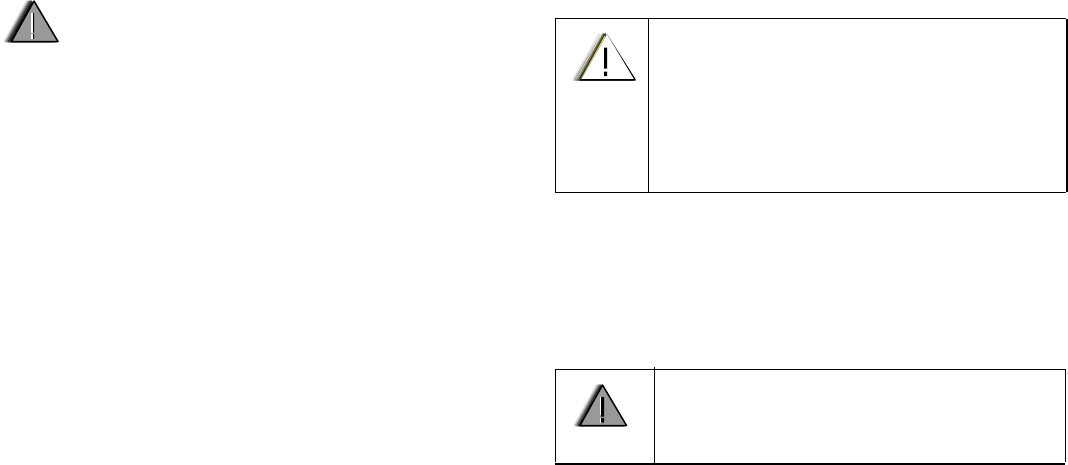Motorola Solutions 89FT7010 Handheld Terminal with GPRS, WLAN & Bluetooth User Manual EME Safety for X Pad March 3 2005
Motorola Solutions, Inc. Handheld Terminal with GPRS, WLAN & Bluetooth EME Safety for X Pad March 3 2005
Contents
- 1. Users Manual
- 2. Users Manual Addendum
Users Manual Addendum

Please retain for future use
6802974C16-A
March, 2005
@6802974C16@
Commercial, Government and Industrial Solutions Sector
1301 E. Algonquin Road, Schaumburg, IL 60196
Copyright © 2005 Motorola All Rights Reserved.
Product Safety and RF Energy Exposure Booklet for Portable Data Computers with
Two-Way Radios
This two-way radio handheld data computer uses electromagnetic energy in the ra-
dio frequency (RF) spectrum to provide communications between two or more users
over a distance. It uses radio frequency (RF) energy or radio waves to send and re-
ceive information. RF energy is one form of electromagnetic energy. Other forms in-
clude, but are not limited to, sunlight and x-rays. RF energy, however, should not be
confused with these other forms of electromagnetic energy, which when used im-
properly, can cause biological damage. Very high levels of x-rays, for example, can
damage tissues and genetic material.
Experts in science, engineering, medicine, health, and industry work with organiza-
tions to develop standards for safe exposure to RF energy. These standards provide
recommended levels of RF exposure for both workers and the general public. These
recommended RF exposure levels include substantial margins of protection.
All Motorola two-way radio products are designed, manufactured, and tested to en-
sure they meet government-established RF exposure levels. In addition, manufac-
turers also recommend specific operating instructions to users of two-way radio
products. These instructions are important because they inform users about RF en-
ergy exposure and provide simple procedures on how to control it.
Please refer to the following websites for more information on what RF energy ex-
posure is and how to control your exposure to assure compliance with established
RF exposure limits:
http://www.fcc.gov/oet/rfsafety/rf-faqs.html
http://www.osha.gov/SLTC/radiofrequencyradiation/index.html
HANDHELD DATA COMPUTER WITH RADIO - PRODUCT OPERA-
TION AND EME EXPOSURE
Your Motorola two-way radio device complies with the following RF energy
exposure standards and guidelines:
•United States Federal Communications Commission, Code of Federal Regula-
tions; 47CFR part 2 sub-part J
•American National Standards Institute (ANSI) / Institute of Electrical and Elec-
tronic Engineers (IEEE) C95. 1-1992
•Institute of Electrical and Electronic Engineers (IEEE) C95.1-1999 Edition
•International Commission on Non-Ionizing Radiation Protection (ICNIRP)
1998
•Ministry of Health (Canada) Safety Code 6. Limits of Human Exposure to
Radio frequency Electromagnetic Fields in the Frequency Range from 3 kHz
to 300 GHz, 1999
•Australian Communications Authority Radiocommunications (Electromagnetic
Radiation - Human Exposure) Standard, 2003
• ANATEL ANNEX to Resolution No. 303 of July 2, 2002 "Regulation of limita-
tion of exposure to electrical, magnetic and electromagnetic fields in the radio
frequency range between 9 KHz and 300 GHz" and "Attachment to resolution
# 303 from July 2, 2002"
BEFORE USING THIS DATA RADIO COMPUTER, READ THIS BOOK-
LET WHICH CONTAINS IMPORTANT OPERATING INSTRUCTIONS
FOR SAFE USAGE AND RF ENERGY AWARENESS AND CONTROL
INFORMATION AND OPERATIONAL INSTRUCTIONS FOR COMPLI-
ANCE WITH RF ENERGY EXPOSURE LIMITS IN APPLICABLE
NATIONAL AND INTERNATIONAL STANDARDS. ALSO READ THE
OPERATIONAL INSTRUCTIONS FOR SAFE USAGE.
HANDHELD DATA
COMPUTER
X- Pad
ab
CAUTION
Operating Instructions
•Hold the handheld data computer in a vertical position in front of the face with
the microphone (and other parts of the computer) at least one inch (2.5 centi-
meters) away from the nose or lips. Keeping the handheld data computer at a
proper distance is important since RF exposures decrease with increasing dis-
tance from the antenna.
•When worn on the body, always place the handheld data computer in a Motor-
ola-approved clip, holder, holster, case, or body harness for this product.
Using approved bodyworn accessories is important because the use of non-
Motorola-approved accessories may result in exposure levels, which exceed
the FCC environment RF exposure limits.
Approved Accessories
Use only Motorola-approved supplied or replacement batteries and accessories.
Use of Non-Motorola approved batteries and accessories may exceed the FCC
(IEEE) and ICNIRP RF exposure guidelines.
For additional information on exposure requirements or other training information,
visit http://www.motorola.com/rfhealth.
Electromagnetic Interference/Compatibility
NOTE: Nearly every electronic device is susceptible to electromagnetic interference
(EMI) if inadequately shielded, designed, or otherwise configured for electromagnet-
ic compatibility.
Facilities
To avoid electromagnetic interference and/or compatibility conflicts, turn off your
handheld data computer in any facility where posted notices instruct you to do so.
Hospitals or health care facilities may be using equipment that is sensitive to exter-
nal RF energy.
Aircraft
When instructed to do so, turn off your handheld data computer when on board an
aircraft. Any use of a handheld data computer must be in accordance with applicable
regulations per airline crew instructions.
Medical Devices Pacemakers
The Advanced Medical Technology Association (AdvaMed) recommends that a
minimum separation of 6 inches (15 centimeters) be maintained between a hand-
held wireless radio and a pacemaker. These recommendations are consistent with
Persons with pacemakers should:
•ALWAYS keep the handheld data computer more than 6 inches (15 centime-
ters) from their pacemaker when the radio is turned ON.
•Not carry the handheld data computer in the breast pocket.
•Use the ear opposite the pacemaker to minimize the potential for interference.
•Turn the handheld data computer OFF immediately if there is any reason to
suspect that interference is taking place.
•
Hearing Aids
Some digital wireless radios may interfere with some hearing aids. In the event of
such interference, you may want to consult your hearing aid manufacturer to discuss
alternatives.
Other Medical Devices
If you use any other personal medical device, consult the manufacturer of your de-
vice to determine if it is adequately shielded from RF energy. Your physician may
be able to assist you in obtaining this information.
Use of Communication Devices While Driving
Always check the laws and regulations on the use of radios in the areas where you
drive.
•Give full attention to driving and to the road.
•Use hands-free operation, if available.
•Pull off the road and park before using the handheld data computer, if driving
conditions or regulations so require.
those of the U.S. Food and Drug Administration.

Operational Warnings
For Vehicles With an Air Bags:
Refer to vehicle manufacturer's manual prior to installation of elec-
tronic equipment to avoid interference with air bag wiring.
Do not place a handheld data computer in the area over an air bag
or in the air bag deployment area. Air bags inflate with great force.
If a portable handheld data computer is placed in the air bag de-
ployment area and the air bag inflates, the handheld data comput-
er may be propelled with great force and cause serious injury to
occupants of the vehicle.
Potentially Explosive Atmospheres
(Explosive atmospheres refers to hazard classified locations that
may contain hazardous gas, vapors, or dusts.)
Turn off your handheld data computer prior to entering any area
with a potentially explosive atmosphere unless it is a handheld
data computer type especially qualified for use in such areas as In-
trinsically Safe (for example, Factory Mutual, CSA, UL, or CEN-
ELEC).
Do not remove, install, or charge batteries in such areas. Sparks
in a potentially explosive atmosphere can cause an explosion or
fire resulting in bodily injury or even death.
The areas with potentially explosive atmospheres referred to
above include fueling areas such as below decks on boats,
fuel or chemical transfer or storage facilities, and areas where
the air contains chemicals or particles such as grain, dust or
metal powders. Areas with potentially explosive atmospheres
are often, but not always, posted.
Blasting Caps and Blasting Areas
To avoid possible interference with blasting operations, turn off
your handheld data computer when you are near electrical blast-
ing caps, in a blasting area, or in areas posted: "Turn off two-way
radio" Obey all signs and instructions.
Accessory Safety Information
IMPORTANT:
SAVE THESE ACCESSORY SAFETY INSTRUCTIONS
•Before using any battery or battery charger, read all the instructions for and
cautionary markings on (1) the battery, (2) the battery charger, which may
include a separate wall-mounted power supply or transformer, and (3) the
handheld data computer using the battery.
•Do not expose any battery charger to water, rain, or snow as they are
designed for indoor or in-vehicle use only.
•To reduce the risk of damage to the cord or plug, pull by the plug rather than
the cord when you disconnect the battery charger from the power source out-
let.
•Do not operate any battery charger with a damaged cord or plug - replace
them immediately.
•Battery chargers may become warm during operation, but not hot. If it
becomes hot to the touch, unplug it from the power outlet immediately and dis-
continue its use.
•Use of a non-recommended attachment to a battery charger may result in a
risk of fire, electric shock, or injury to persons.
•Make sure the battery charger power cord is located so that it will not be
Operational Cautions
Batteries
All batteries can cause property damage and/or bodily injury, such
as burns if a conductive material such as jewelry, keys, or beaded
chains touches exposed computers. The conductive material may
complete an electrical circuit (short circuit) and become quite hot.
Exercise care in handling any charged battery, particularly when
placing it inside a pocket, purse, or other container with metal
objects.
To reduce the risk of injury, charge only the rechargeable
batteries listed in the Accessories section of this manual.
Other types of batteries may burst, causing personal
injury and damage.
CAUTION
WARNING
WARNING
stepped on, tripped over, or subjected to damage or stress.
•An extension cord should not be used with any battery charger unless abso-
lutely necessary. Use of an improper extension cord could result in a risk of
fire and electric shock. If an extension cord must be used, make sure that:
•The pins on the plug of the extension cord are the same number, size,
and shape as those on the plug of the charger.
•The extension cord is properly wired and in good electrical condition.
•The cord size is 18AWG for lengths up to 100 feet and 16AWG for
lengths up to 150 feet.
•To reduce the risk of injury, charge only the rechargeable batteries
listed in the Accessories section of this manual. Other types of batter-
ies may burst, causing personal injury and damage.